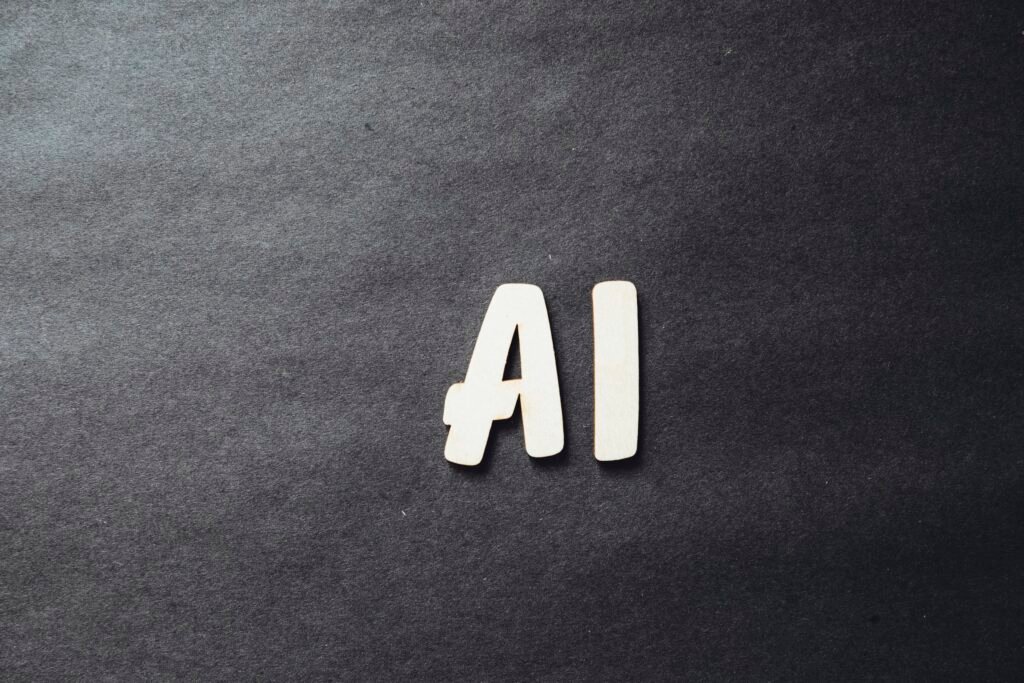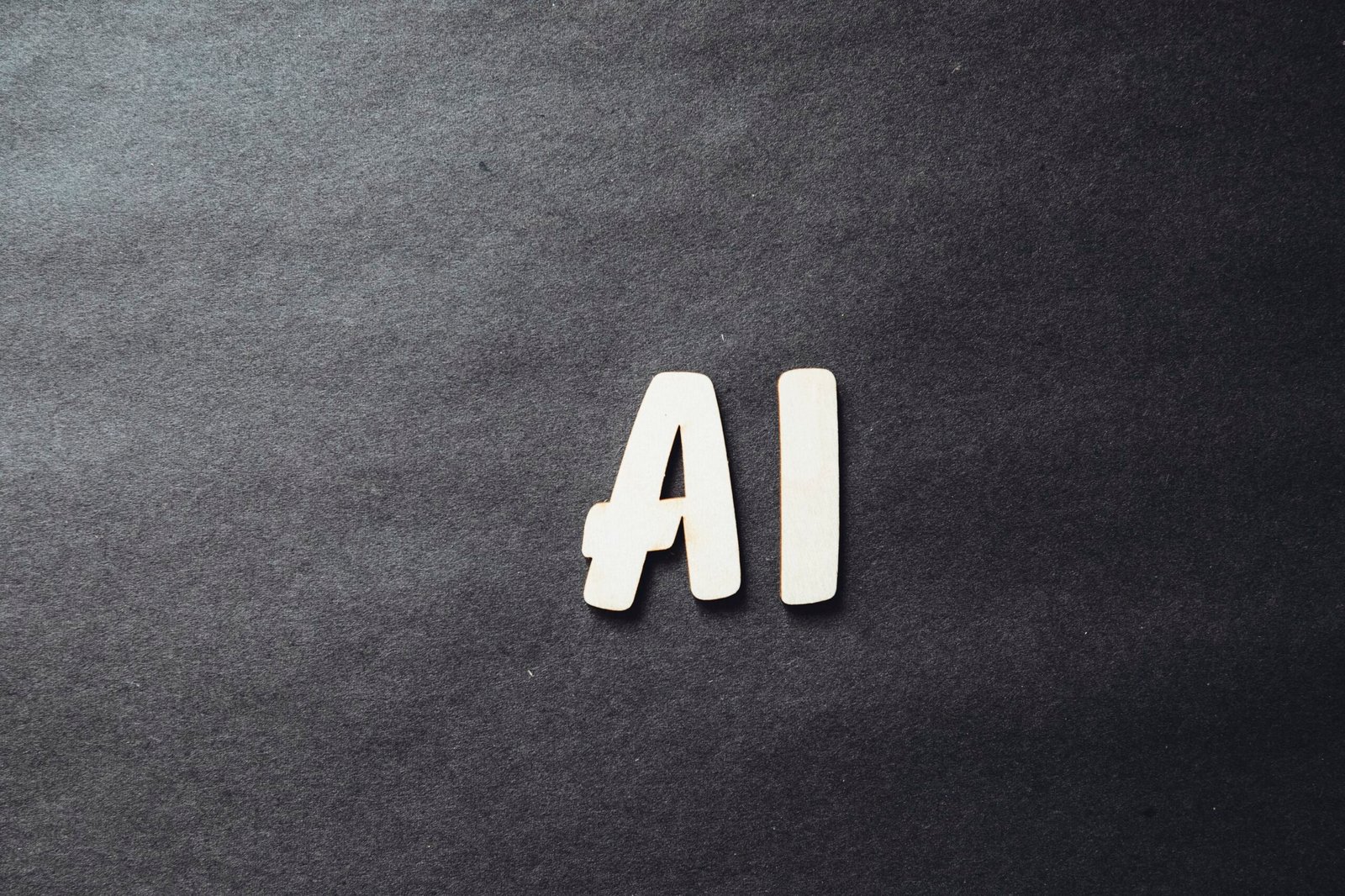Have you ever wondered what it would be like to build your own artificial intelligence? In this article, we will explore the fascinating world of AI and delve into the steps you can take to create your very own AI system. Whether you are a tech enthusiast or simply curious about the possibilities of AI, this guide will provide you with the knowledge and resources to embark on your own AI-building journey. So, grab your coding tools and get ready to unleash the power of your imagination as we explore the exciting realm of building your own artificial intelligence.

Understanding Artificial Intelligence
Artificial intelligence (AI) refers to the development of computer systems that can perform tasks that typically require human intelligence. These systems are designed to analyze data, learn from patterns and experiences, make decisions, and solve complex problems. AI has become increasingly important in various industries and fields, revolutionizing the way we live and work.
Defining artificial intelligence
Artificial intelligence can be broadly defined as the simulation of human intelligence in machines that are programmed to think and learn like humans. It encompasses a wide range of technologies, including machine learning, natural language processing, computer vision, and robotics. AI systems can understand, reason, learn, and interact with humans, making them versatile tools for enhancing productivity and efficiency.
Different types of artificial intelligence
There are different types or levels of artificial intelligence, ranging from narrow or weak AI to general or strong AI. Narrow AI is designed to perform specific tasks, such as speech recognition or image classification, while general AI aims to simulate human intelligence and handle a variety of tasks in diverse contexts. While general AI is still largely theoretical, narrow AI has made significant advancements and is widely used in various applications today.
Importance of artificial intelligence
Artificial intelligence has immense importance in today’s world. It has the potential to transform industries, drive innovation, and solve complex problems. AI can automate routine tasks, analyze large amounts of data to derive valuable insights, personalize experiences, improve decision-making processes, and enhance customer service. From healthcare to finance, retail to transportation, AI is revolutionizing operations, making processes more efficient and effective.
Prerequisites for Building AI
Before embarking on the journey of building your own AI, there are several prerequisites that you should consider.
Understanding programming languages
A solid understanding of programming languages is essential when building AI systems. Python, for example, is a popular language for AI development due to its simplicity, versatility, and extensive libraries for machine learning. Other languages like R, Java, and C++ may also be useful depending on the specific AI tasks or frameworks you’re working with.
Familiarity with machine learning
Machine learning is at the core of AI development. Familiarity with machine learning concepts, algorithms, and techniques is crucial. Understanding the basics of supervised learning, unsupervised learning, and reinforcement learning is essential to train AI models. Additionally, knowledge of different machine learning algorithms such as decision trees, support vector machines, and neural networks is important for model selection and optimization.
Knowledge of mathematics and statistics
Mathematics and statistics form the foundation of many AI algorithms and techniques. Having a strong grasp of concepts like linear algebra, calculus, probability theory, and statistical modeling is vital. These skills enable you to understand and implement various AI algorithms, evaluate their performance, and make informed decisions during the AI development process.
Access to computational resources
Building AI models often requires significant computational resources. Access to powerful computers or cloud-based platforms is necessary for training and running complex AI algorithms. GPU-accelerated hardware can significantly speed up the training process, especially for deep learning models. Ensuring access to these resources is crucial for efficient AI development.
Choosing the AI Framework
Once you have the necessary prerequisites in place, selecting the right AI framework is crucial. Various AI frameworks are available, each with its own strengths and features.
Exploring popular AI frameworks
Popular AI frameworks include TensorFlow, PyTorch, Keras, and scikit-learn. TensorFlow is widely used for developing and training deep learning models and offers a robust ecosystem of tools and libraries. PyTorch is known for its dynamic computational graph and ease of use, making it popular among researchers. Keras is a high-level API that simplifies the development of deep learning models. Scikit-learn focuses on traditional machine learning algorithms and provides a user-friendly interface.
Evaluating compatibility and features
When choosing an AI framework, consider its compatibility with your programming language, ease of use, and the specific features it offers. Look for frameworks that provide extensive documentation, tutorials, and community support, as these can greatly aid in the development process. Additionally, consider the framework’s scalability, performance, and support for deployment on various platforms.
Considering community support and resources
The AI community plays a vital role in framework development and support. Consider the size and active engagement of the community surrounding a particular framework. A large and active community ensures access to resources, forums, and libraries, making it easier to seek help and find solutions when facing challenges. Community support can greatly expedite the AI development process and lead to more robust systems.
Collecting and Preparing Data
Data is a fundamental component of AI development. Gathering relevant data and preparing it for analysis and modeling is a crucial step in building AI systems.
Identifying relevant data sources
Identify and gather data from relevant sources that align with the objectives of your AI project. This can include public databases, APIs, or proprietary datasets. Ensure that the data is representative, diverse, and comprehensive to avoid biases and obtain accurate results. Consider the quality and accuracy of the data while selecting the sources to ensure reliable outcomes.
Data cleaning and preprocessing
Data obtained from various sources often requires cleaning and preprocessing to ensure consistency and quality. This involves removing duplicate records, handling missing values, standardizing formats, and dealing with outliers. Preprocessing techniques like normalization, scaling, and feature engineering may also be applied to enhance the quality of the data and improve model performance.
Data labeling and annotation
For supervised learning tasks, labeling or annotating data is essential to train AI models. This process involves manually assigning labels or annotations to each data sample, indicating the desired output or target variable. Training datasets should be appropriately labeled to enable the model to learn and make accurate predictions. Consider outsourcing data labeling tasks to specialized providers or crowd-sourcing platforms if the volume of data is large.
Ensuring data privacy and security
As data is a valuable asset, ensuring privacy and security is of utmost importance. Adhere to data protection regulations and implement protocols to safeguard sensitive information. Anonymize or encrypt data when necessary, and only retain the data required for training and analysis. Ensure that data handling practices comply with legal and ethical standards to maintain trust with users and stakeholders.

Building AI Models
With the data collected and prepared, it’s time to build AI models that can learn from the data and make predictions or decisions.
Selecting the appropriate algorithm
Choose the right algorithm based on the specific AI task and the characteristics of the data. Consider factors such as algorithm complexity, performance, and suitability to the problem domain. Decision trees, support vector machines, neural networks, and ensemble methods like random forests and gradient boosting are among the common algorithms used for machine learning and AI tasks.
Training the model with labeled data
Supervised learning involves training the AI model using labeled data to learn patterns and relationships. The model learns to map input features to the desired output by minimizing the difference between predicted and actual outputs. This process involves parameter tuning, adjusting the model’s weights and biases, and optimizing its performance. It requires iterative training on the dataset to improve accuracy and reduce errors.
Evaluating and fine-tuning the model
Evaluating the trained model is crucial to assess its performance and make improvements. Use evaluation metrics such as accuracy, precision, recall, and F1 score to measure the model’s effectiveness. Identify areas where the model may be lacking and refine it through techniques like hyperparameter tuning, regularization, or changing the architecture. Fine-tuning the model ensures its robustness and ability to handle real-world scenarios.
Dealing with overfitting and underfitting
Overfitting and underfitting are common challenges in AI development. Overfitting occurs when the model performs well on the training data but fails to generalize to new, unseen data. Underfitting, on the other hand, happens when the model fails to capture the underlying patterns in the data. Techniques like regularization, cross-validation, and adjusting model complexity can help mitigate these issues and improve generalization performance.
Implementing AI Algorithms
With a trained and optimized AI model, it’s time to implement the algorithms using the chosen framework and take advantage of its capabilities.
Developing AI algorithms using chosen framework
Leverage the functionalities of the selected AI framework to implement the trained models. Use the corresponding libraries and APIs to integrate the models into the application or system. Ensure compatibility between the model and the framework by adhering to the framework’s coding conventions and guidelines. This step allows you to harness the capabilities of the framework and optimize performance.
Understanding neural networks and deep learning
Neural networks are at the core of deep learning, a subset of machine learning that deals with complex patterns and hierarchical representations. Deep learning models consist of multiple layers of interconnected artificial neurons, allowing them to learn intricate relationships in data. Understanding the architecture and working principles of neural networks is key to effectively utilizing deep learning algorithms and frameworks.
Creating layers and optimizing parameters
In deep learning, constructing the neural network architecture involves creating different layers and configuring their properties. This includes selecting the appropriate activation functions, choosing the number of neurons, and specifying the connections between layers. Optimize the parameters of the neural network through techniques like gradient descent or adaptive optimization algorithms to improve convergence and training speed.
Integrating pre-trained models and transfer learning
Pre-trained models are models that have been trained on large datasets by industry experts and researchers. Leveraging pre-trained models can save time and resources during the AI development process. By using transfer learning, where you fine-tune a pre-trained model on a different but related task, you can benefit from the knowledge and patterns learned by the model on a broader dataset. This can be particularly useful when working with limited labeled data.

Testing and Validation
Before deploying an AI system, thorough testing and validation are essential to ensure its reliability and performance.
Creating test datasets
Test datasets are used to evaluate the AI system’s performance on unseen data. These datasets should be representative of the real-world scenarios the AI system will encounter. Carefully select and prepare test datasets to cover a wide range of inputs and potential edge cases. This helps ensure that the AI system performs well in different situations and not just on the training data.
Applying validation techniques
Validation is the process of assessing the generalization ability and performance of an AI model. Techniques like cross-validation, where the dataset is split into multiple subsets for training and evaluation, provide a more robust evaluation of the model’s performance. K-fold cross-validation is a common practice to estimate the model’s performance on unseen data. Verification against different evaluation measures helps validate the performance and reliability of the AI system.
Evaluating performance metrics
Various performance metrics can be used to evaluate the AI system’s performance depending on the task at hand. Accuracy, precision, recall, F1 score, and area under the ROC curve are commonly used metrics for classification tasks. Mean squared error, R-squared, and root mean squared error are often used for regression tasks. Select the appropriate metrics that align with the objectives of your AI system and evaluate its performance accordingly.
Addressing biases and fairness
Bias and fairness are crucial considerations in AI development to ensure equitable outcomes and avoid discrimination. Identify and mitigate biases in the data, algorithms, or models that could lead to unfair results. Carefully examine data biases, algorithm biases, and any potential discriminatory attributes to achieve fairness in decision-making and avoid unintended consequences. Regularly monitor and update the AI system to prevent biases and improve fairness over time.
Deployment and Integration
Once your AI system has been thoroughly tested and validated, it’s time to prepare it for deployment and integration into existing systems.
Setting up the required infrastructure
Deploying AI systems often requires dedicated infrastructure to ensure optimal performance, scalability, and availability. This may include setting up servers, cloud environments, or edge devices. Assess the computational and storage requirements of the AI system and allocate the necessary resources accordingly. Consider scalability, security, and reliability factors while designing the infrastructure to ensure smooth deployment.
Scaling and optimizing for production
Scaling an AI system for production involves optimizing its performance to handle large volumes of data and a high number of requests. Ensure that the AI system can handle increased workloads by optimizing code, improving memory management, and implementing parallel computing techniques. Consider deploying the AI system on distributed systems or using containerization technologies for efficient scaling and enhanced performance.
Ensuring real-time processing and responsiveness
Many AI applications require real-time processing and quick responses to user interactions. Design the AI system to handle real-time data streams or user requests efficiently. This may involve implementing online learning techniques, streaming algorithms, or optimizing the system’s architecture for low-latency processing. Ensure that the AI system meets the responsiveness requirements of the intended use case or application.
Integrating AI into existing systems
Integrating AI systems into existing workflows or systems is crucial for seamless operation. Define the integration points and design interfaces that allow communication between the AI system and other components or databases. Use APIs or SDKs to enable data exchange and interaction. Ensure compatibility and interoperability between the AI system and existing software or hardware to facilitate smooth integration.
Monitoring and Error Handling
Effective monitoring and error handling are essential for maintaining the performance and accuracy of an AI system.
Implementing continuous monitoring
Continuously monitor the performance of the deployed AI system to ensure its accuracy and efficiency over time. This includes monitoring metrics, such as prediction accuracy and processing speed, as well as system health indicators, such as CPU and memory usage. Implement alert mechanisms or monitoring tools that notify you of any anomalies or performance degradation. Monitoring allows timely identification and mitigation of issues, ensuring optimal system performance.
Handling errors and exceptions
Error handling is important to ensure the AI system gracefully handles unexpected situations and prevents critical failures. Implement error handling mechanisms that capture and handle exceptions, such as invalid inputs or unexpected data formats. Gracefully respond to errors by providing informative error messages or logging critical information for troubleshooting. Well-designed error handling improves the reliability and user experience of the AI system.
Detecting and mitigating biases
Regularly monitor the AI system for biases and discrimination that may arise from biased data or biased algorithmic decision-making. Implement techniques like debiasing, fairness-aware learning, or post-processing to reduce bias and promote fairness. Continuously analyze the AI system’s outputs to ensure that the decisions made by the system are free from discriminatory biases. Regular audits and bias detection measures help maintain trust and fairness in the AI system.
Improving model accuracy over time
AI models can benefit from continuous learning and improvement. Implement mechanisms that enable the AI system to receive feedback and learn from new data or user interactions. This may involve retraining the models periodically using updated data or incorporating user feedback into the learning process. Continuously monitor model performance and update the models as necessary to enhance accuracy, adapt to changing conditions, and improve the overall AI system.
Continued Learning and Improvement
AI is a rapidly advancing field, and continued learning and improvement are vital to stay up-to-date and ensure the effectiveness of your AI systems.
Staying updated with AI advancements
To stay ahead in the world of AI, it is essential to stay updated with the latest advancements, research papers, and industry trends. Follow reputable sources, attend conferences and webinars, and participate in AI communities to keep abreast of the latest developments. Subscribe to AI newsletters or join online forums to engage in discussions and gain insights from experts in the field.
Engaging in the AI community
Active engagement in the AI community can provide valuable learning opportunities and foster collaboration. Contribute to open-source projects, share your knowledge and experiences through blog posts or tutorials, and seek feedback from the community. Participating in online forums or attending local meetups can help connect with fellow AI enthusiasts and experts, providing a supportive network for knowledge exchange and skill development.
Participating in research and competitions
Engaging in AI research and competitions can enhance your skills and knowledge while providing opportunities for recognition. Participate in data science competitions or Kaggle challenges to practice your AI development skills and learn from others. Contribute to research projects or collaborate with academia or industry experts to deepen your understanding and contribute to advancements in the field.
Continuously improving AI models and algorithms
To stay competitive, continuously improve your AI models and algorithms. Explore advanced techniques, experiment with different architectures, or incorporate emerging algorithms into your AI systems. Analyze performance metrics, feedback from users, and real-world outcomes to identify areas for improvement. Embrace a growth mindset and continuously iterate on your AI models to achieve better accuracy, efficiency, and performance.






